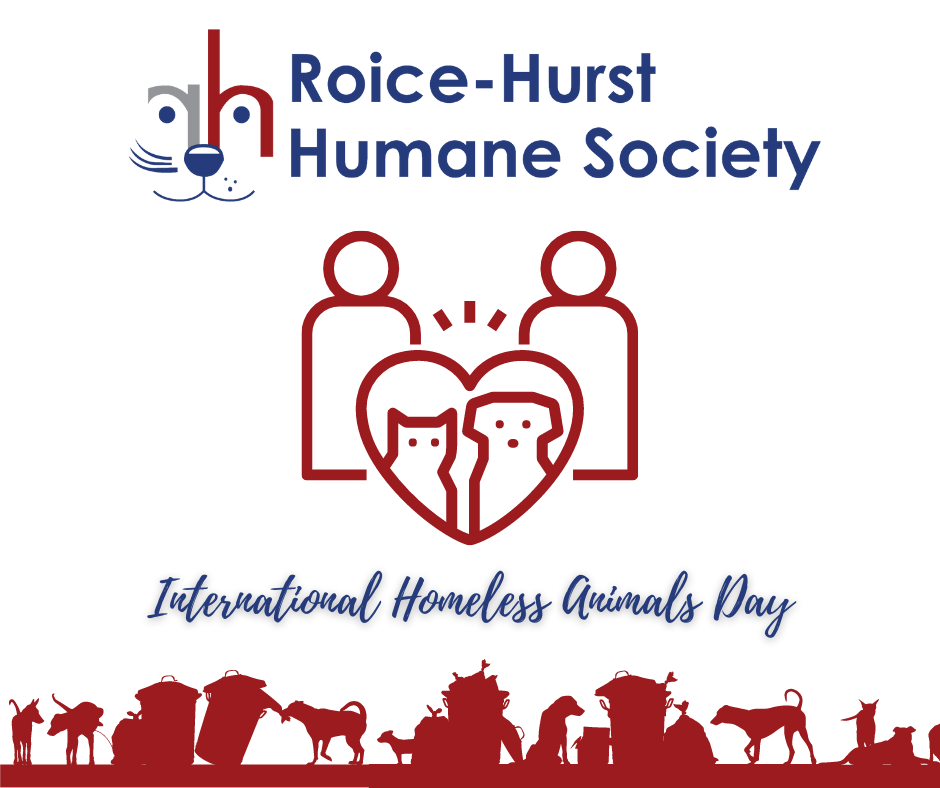Since 1992, the third Saturday of every August has been named International Homeless Animals Day in hopes of increasing awareness and creating solutions for the homeless pet population worldwide. As many as 70 million dogs and cats are estimated to be homeless in the United States alone, and anywhere from 200-600 million worldwide. Of the 70 million homeless pets in the USA, only about 6.5 million ever make it into a shelter for a chance at a better life. For those of us who love our pets, it’s both difficult and heartbreaking to imagine so many animals living their lives with nowhere to call home and no one to love them.
The lives of homeless dogs and cats are far from easy, most struggling to survive each day without access to basic necessities such as food, clean water, and shelter. Each of these animals have a story we may never know, whether they were dumped, abandoned, lost, left behind, or even born into homelessness. They are living, breathing, feeling creatures who are forced to struggle through a life they didn’t choose–a life they cannot change without the help of people who care. So how can you help be a part of the solution this International Homeless Animals Day? Below are a few of the many ways you can make a difference in the lives of homeless pets today!
- Spay and neuter your pets! One of the most important tools of controlling pet overpopulation is spay and neuter surgeries. Dogs and cats are able to reproduce at alarming rates and oftentimes it seems like there are more pets looking for homes than there are homes available. To give an idea on how quickly pets reproduce, one unaltered female cat and her offspring can produce about 420,000 cats and one unspayed female dog and her offspring can produce about 99,000 dogs in only seven years. In addition to reducing the amount of unwanted offspring, spay and neuter surgeries also offer other health and behavioral benefits. For example, pets who are spayed/neutered at an early age typically are at a low risk for developing mammary, ovarian, uterine, and testicular cancers and infections. Altered pets are happier, healthier, and tend to live longer lives than unaltered pets. It will also help save you money in the long run, since the cost for a spay or neuter is significantly less than the cost of caring for a litter of puppies or kittens. For more information on spay and neuter, check out When To Spay and the ASPCA’s guide to spay and neuter benefits.
- Adopt or foster! When you choose to adopt or foster a pet, you are changing the lives of both the animal you adopt/foster as well as the next animal coming into the shelter. Foster homes help dogs and cats adjust to home life and create space in crowded shelters for other animals needing placement. A commitment of several weeks in foster care can change the world for a dog or cat and give them a better foundation for life in their adoptive home. Rescues and shelters wouldn’t be able to continue their life-saving work without fosters and adopters. To learn more about Roice-Hurst’s Foster Program, click here. Don’t forget to check out our Available Pets, too!
- Donate to a shelter or rescue! When people hear the word “donate”, they don’t always realize the variety of ways they can donate to a shelter. Donations come in many different forms, and all are important. Some of the most helpful donations include donating your time and skills through volunteer work, donating pet food or other supplies to keep shelter pets healthy and happy, and donating financially. Whatever way you are able to give, know that your help makes a difference and is always appreciated! To learn about what items are needed most often at Roice-Hurst, check out our Wish List and be sure to visit our Support Page for other ways to support RHHS!
- Spread the word! Since animals aren’t able to speak up for themselves, it is up to us to continue to raise awareness and educate the community on this critical issue. Get creative in your community to find new ways to help promote animal welfare, fundraise, and encourage others to support rescue organizations. Learn about the resources available in your area and share your knowledge with friends and family who might be unaware. When you see a problem, don’t be afraid to reach out to a shelter or animal control organization to help. The more people who are willing to help solve the pet overpopulation issues we face today, the sooner we can get as many homeless animals into loving homes as possible.
- Always ID your pet! Accidents can happen and sometimes pets get lost. Because of this, it is important to ensure your pet is always wearing at least one form of current identification at all times. The best and easiest way to permanently identify your pet is via microchipping. Collars with tags or even a phone number written or embroidered onto the collar can help reunite a lost pet with their owner, but only if the pet is wearing the collar at the time it is found. Microchips provide 24/7 identification over the lifetime of your pet and is the most reliable method for reunification when your information is kept up to date. Regardless of which form of ID you choose for your pet, making sure your information is accurate at all times is necessary. To learn more about how a microchip works, visit the AVMA’s Microchipping FAQ page, and don’t forget to check out our Low-Cost Clinics to get your pet microchipped!

